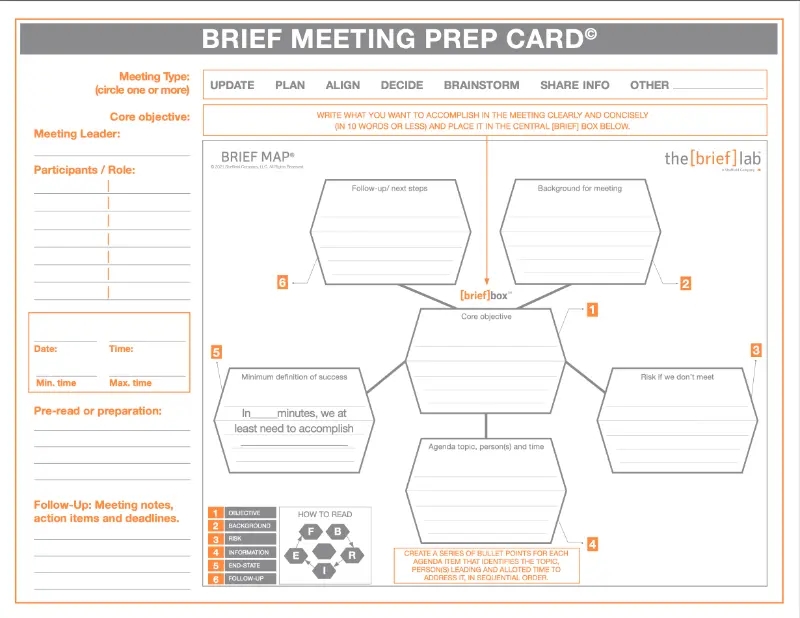Review the Key Steps of the BRIEF Principles Action Plan
Welcome to the seventh and final step of the BRIEF principles action plan. Over the course of three weeks we’ve summarized the BRIEF principles to help you reach your goals, better communicate, and captivate your audience.
Here is a short review for you:
- Step 1: How to manage people’s attention, ask the why behind any reasoning, and how to map out your message.
- Step 2: How to speak in headlines, trim your message, and listen closely.
- Step 3: How to say no to presentation mode, use the power of three, and cut your speech in half.
- Step 4: Communicate in your own words, paint a picture, stop talking and let people comment or ask you questions.
- Step 5: How to present without your notes, don’t get too comfortable, and deliver a summary.
- Step 6: Put passion in your work, make it easy for your audience to understand your message, and tell a story instead of selling.
Let’s continue with your final two of BRIEF principles.
19th Principle: What’s in it for me?
There always needs to be a payoff. Know what it is, and deliver it.
- Truth: It’s natural to listen and constantly wonder, “How does this affect me?”
- Implication: You need to deliver a payoff as you would a punch line at the end or a headline at the beginning.
- Plan and practice:
Tell a joke and get comfortable seeing how the punch line is felt with immediate laughter.
Always ask before writing an email: What’s in it for the receiver? Why should they read this? Include that reason in the correspondence.
20th Principle: Commit to clear and concise.
Success means deciding to be disciplined.
- Truth: Brevity shows respect and always creates a positive response.
- Implication: If you want to make a bigger impact, decide to give your audience less.
- Plan and practice:
Practice, practice, practice. Embrace and write down at least three of these principles.
Read my book “Brief: Make a bigger impact by saying less”.
Be a model of BRIEF and spread it.
Thank you for investing the time and attention to absorb the insights of BRIEF. I hope BRIEF principles are useful to you. If you have any questions, don’t hesitate to let me know. You can do so by commenting on here on the blog, or through our Contact Page.
Until next week—be better, be brief.
Want to know more about being brief? Check out The Brief Practitioner, an online course from The Brief Lab that teaches executives how to avoid information overload and become lean, effective leaders and communicators.

